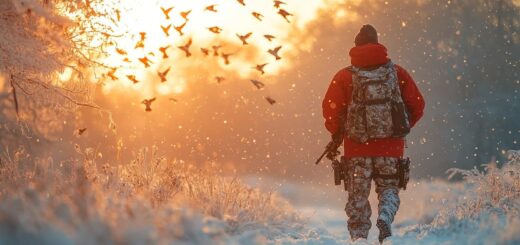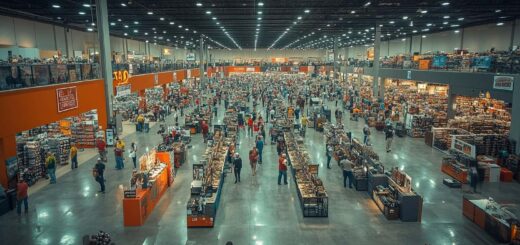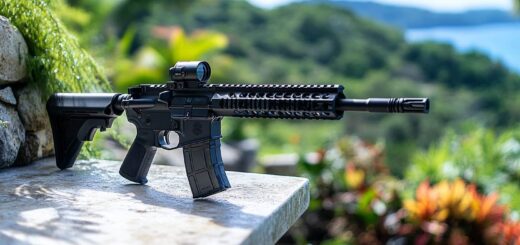Braving the Elements: How Weather Conditions in the Northwest Affect Your Shooting Gear
Introduction
For hunters, outdoor enthusiasts, and gear aficionados, the Pacific Northwest is a playground of dense forests, rugged mountains, and pristine waterways. However, it’s also a region notorious for its unpredictable and often harsh weather conditions. Understanding how these weather patterns affect your shooting gear is not just a matter of convenience but a necessity for maintaining performance and longevity. In this post, we’ll explore the ins and outs of weather effects on gear and provide actionable tips to ensure you’re always prepared for Mother Nature’s whims.
Weather Patterns in the Northwest
The Pacific Northwest is characterized by its diverse and fluctuating weather patterns. From the drizzly coastal areas of Washington and Oregon to the snowy peaks of the Cascades, the region offers a unique climate that can challenge even the most experienced outdoor enthusiast.
In spring, expect a mix of rain showers and mild temperatures, perfect for those who don’t mind a bit of mud. Summer brings drier conditions, but occasional heatwaves can spike temperatures dramatically. Fall is a blend of misty mornings and crisp evenings, while winter often blankets higher elevations in snow and subjects lower areas to relentless rain. Each season presents its own set of challenges for shooting gear, making it essential to understand what you’ll be up against.
Seasonal changes can significantly impact your outdoor activities. For instance, moisture from spring and fall rains can invade your gear, leading to rust and deterioration. Summer heat can affect the accuracy of optical devices, while winter snow and cold can freeze moving parts and affect battery life. Knowing what to expect allows you to prepare and adapt, ensuring your gear remains reliable year-round.
How Weather Affects Your Gear
Moisture is one of the biggest threats to shooting gear in the Northwest. Consistent rain and high humidity levels can lead to rust on metal parts, mold on fabric, and a general degradation of materials. Even waterproof gear is not immune; moisture can seep into seams and zippers, causing long-term damage if not properly dried and maintained.
Temperature fluctuations also play a significant role. Cold weather can cause lubricants to thicken, making moving parts sluggish. It can also make plastic components brittle, increasing the risk of cracks. Conversely, high temperatures can warp materials and affect the precision of scopes and rangefinders. Optical devices are particularly sensitive, as extreme temperatures can cause fogging and misalignment.
Wind is another factor that can’t be ignored. Strong gusts can disrupt your aim and throw off your accuracy. In addition, windblown debris like dust and sand can infiltrate your gear, leading to scratches and other damages. Maintaining your gear in such conditions often requires regular cleaning and the use of protective covers.
Gear Selection and Preparation Tips
Choosing the right gear for the Northwest’s variable weather is crucial. Look for equipment specifically designed to withstand moisture and temperature extremes. Stainless steel firearms, for example, are less susceptible to rust, while synthetic stocks and grips offer better resistance to water damage compared to wood.
Preparation is equally important. Before heading out, treat your gear with water-repellent sprays and lubricants designed for cold weather. Always carry cleaning kits to remove moisture and debris immediately after exposure. Investing in high-quality cases and covers can also protect your gear during transport and storage.
When it comes to clothing, layering is key. Opt for moisture-wicking base layers, insulating mid-layers, and waterproof outer shells. This approach will keep you comfortable and focused, rather than worried about the elements. Additionally, always have spare batteries for electronic devices, as cold temperatures can drain power quickly.
Community Insights
We reached out to local hunters and outdoor enthusiasts to gather insights on dealing with the Northwest’s challenging conditions. John D., a seasoned hunter from Oregon, shares, “I’ve learned the hard way that regular maintenance is non-negotiable. After every trip, I disassemble my rifle, clean and oil it thoroughly, and store it in a dry place. It’s a bit tedious, but it’s saved me from costly repairs.”
Similarly, Sarah L., an outdoor guide from Washington, emphasizes the importance of preparation. “Before I head out, I always check the weather forecast and pack accordingly. I’ve seen too many people get caught unprepared, and it ruins their experience. A little foresight goes a long way.”
These real-world experiences highlight the practical side of gear maintenance and demonstrate that with the right approach, you can enjoy the great outdoors without compromising your equipment.
Conclusion
Understanding how weather conditions in the Northwest affect your shooting gear is essential for maintaining its performance and longevity. By choosing weather-resistant gear, preparing adequately, and learning from the experiences of seasoned enthusiasts, you can ensure your equipment is always ready for action.
We encourage you to share your own tips and experiences in the comments below. And if you found this post helpful, consider signing up for our newsletter to stay updated on the latest gear reviews, tips, and exclusive deals. Together, we can build a community of well-prepared and knowledgeable outdoor enthusiasts.



